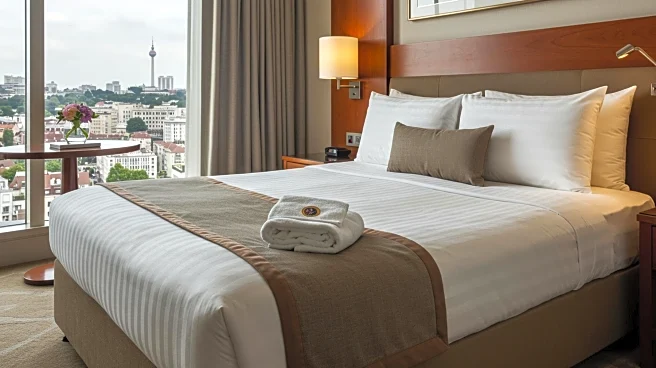Rapid Read • 8 min read
The Vizcaya Museum and Gardens in Miami has reinstalled its iconic Peacock Columns after more than 30 years. These columns are a significant part of the museum's architectural heritage, symbolizing the grandeur and historical importance of the site. The restoration marks a major milestone in preserving the cultural and historical assets of the museum, which is renowned for its elaborate gardens and historic buildings. The return of the Peacock Columns is expected to enhance the aesthetic appeal and historical authenticity of the museum, attracting visitors interested in art, history, and architecture.
AD
The restoration of the Peacock Columns at Vizcaya Museum and Gardens is significant for cultural preservation and tourism in Miami. As a historical landmark, Vizcaya plays a crucial role in educating the public about the region's architectural and cultural history. The reinstallation of these columns not only restores a piece of Miami's heritage but also boosts the museum's appeal as a tourist destination. This can lead to increased visitor numbers, benefiting the local economy and supporting the museum's ongoing conservation efforts. The project underscores the importance of maintaining historical sites for future generations.
Following the restoration, Vizcaya Museum and Gardens may see a surge in visitor interest, prompting further investments in preservation and educational programs. The museum could leverage this restoration to host special events or exhibitions that highlight the history and significance of the Peacock Columns. Additionally, the successful completion of this project might encourage similar restoration efforts for other historical elements within the museum, ensuring the site's continued relevance and appeal.
The restoration of the Peacock Columns at Vizcaya Museum and Gardens highlights broader themes of cultural heritage preservation and the challenges associated with maintaining historical sites. It raises questions about funding, expertise, and community involvement in such projects. The initiative may inspire other cultural institutions to prioritize similar restoration efforts, fostering a greater appreciation for historical architecture and its role in shaping community identity.
AD
More Stories You Might Enjoy











